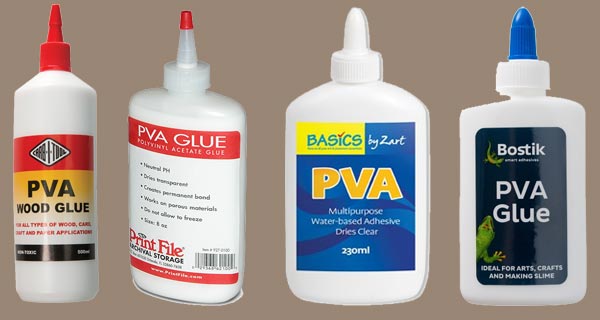What Is PVA Glue And What Is It Used For?
If you are a woodworker, then you already know that your choice of glue matters in the quality of your end-product.
There are many different types of glue in the market these days and each of them differs from one another whether it is in bonding strength or drying time.
But still to this day, none might be as popular as the PVA glue. It offers excellent bonding strength, has a respectable drying period, and is also quite affordable to be a great choice for just about anyone.
But what exactly is this glue. We hear the name often, but people rarely talk about its properties or what it is good for. Well, we are here to uncover this mystery.
In this article, we will take a look at this glue and discover its uses to help you figure out whether you need it for your next project. So let us get started
Table of Contents
What Exactly Is PVA Glue?
Well, we all know that PVA is a type of glue, but what does it actually mean. The term stands for polyvinyl acetate, which is, in fact, a synthetic polymer.
Though PVA glue does not have any distinctive color or smell, you can usually identify it from its rubber texture. Due to its versatility, this glue is used in many fields of work such as woodworking, bookbinding, and even arts and crafts.
These days, PVA adhesives are an essential element in the toolkit of any DIYer. And if you are trying to pick up woodworking or other skills, learning how to use them efficiently will give you an edge over your peers.
Advantages of Using PVA Glue
Using this adhesive offers some excellent advantages over using other types of glue regardless of your project. In the following section, we will give you a quick rundown of some of the major benefits you get from using PVA in your projects.
Excellent Binding Strength
This glue offers excellent binding strength which makes it a great choice as an adhesive for a wide variety of projects. If there is a pasting or connecting job that needs doing, you can bet that your glue has more than enough bonding strength to make it last.
Besides, with the right type of PVA, you will also get decent protection against elements such as moisture or temperature. Once it dries completely, it will form a protective layer, adhering the two points together.
Cost Effective Option
This glue not only offers an excellent bonding strength but is also quite affordable. If you cannot afford expensive epoxy or polyurethane glue for your project, using PVA glue can be a cost-effective solution. You will not be compromising the quality of the bond too much either.
Even if you get the most expensive PVA glue on the market, it will cost a lot cheaper than expensive epoxy adhesives.
Non-toxic Nature
If you regularly work with adhesives, you already know about the fumes they produce. Working indoor with adhesives requires you to wear a mask. Otherwise, you can easily inhale the toxic fumes coming out of it which can cause long-term health issues in your system.
However, with PVA glue, that is never a concern. It does not emit any toxic fume. In fact, even if you consume a bit of glue, you should feel no negative effects. The non-toxic nature of it is what makes it such a great choice as craft glue.
Disadvantages Of PVA Glue
Now that you looked at the advantages of using it, there are two drawbacks you need to know about. Here are the disadvantages of using this glue.
Not Waterproof
Although you can find waterproof PVA glue on the market, most of them are not waterproof. So, if your project requires waterproof adhesives, you need to spend a bit more than what you would usually spend for these glues. Still, it is not the end of the world with these glues.
Slow To Dry
Another gripe that some people have with this is that they are not exactly quick drying. However, some projects such as bookbinding or scrapbooking, do benefit from the slow drying nature of white glue so it is not exactly a dealbreaker.
Different Types Of PVA Glues
These glues are as straightforward and simple as adhesives can get. They offer excellent bonding strength at a very affordable price. But to get the most out of it, you should pick out the right PVA depending on your project.
The glue can be divided into three main categories. In the following section, we will give you a quick rundown of the three variants so you can decide which one you need for your specific requirements.
1. White Glue
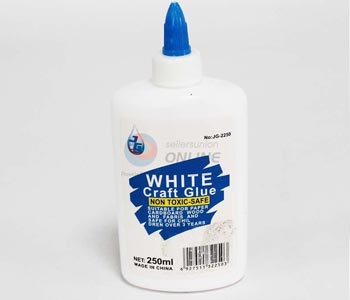
As the name suggests, this type of PVA has a whiteish texture to it. It is mostly associated with arts and crafts and offers decent bonding strength.
The price of this type is also quite cheap, making it an affordable choice if you want a simple glue for arts and crafts.
It is also the glue of choice for bookbinding projects or decorative tasks. You can also use it to repair screw holes in your walls or a piece of wood.
White glue does not show any water-resistance properties and will break apart if exposed to extreme heat or water.
2. Aliphatic PVA Glue
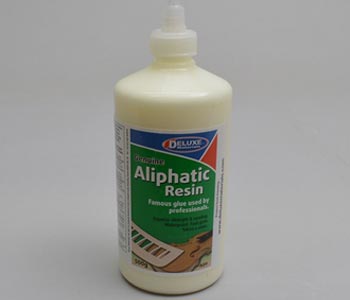
If your focus is woodworking, then your choice should be the aliphatic glue. This variant is a bit pricier than the normal white glue but is still more affordable than other options on the market. A major benefit of this type of glue is that it can double as a high-grade sealer for your woodworking projects.
You can identify it from its yellowish texture. It handles both humidity and water well and shows decent levels of water resistance.
When it comes to drying time both white glue and aliphatic glue give a similar performance. But once dried, aliphatic glue forms a much stronger bond.
3. Cross-Linking PVA Glue
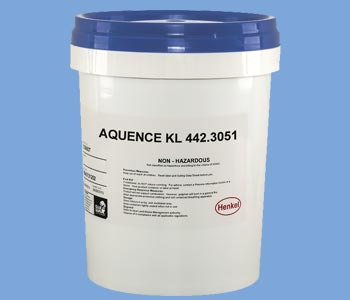
Cross-linking is not that common and accessible to the world as of yet. It is used by very few people for sensitive projects.
The major characteristics of this type of PVA are that it is fully waterproof. This also means you cannot dilute this type of glue using water.
What Is PVA Glue Used For?
As we have already said, this glue is quite versatile. It is used extensively in many different lines of work. In the following section of the article, we will go through some of the fields that require the use of this type of adhesive.
Woodworking
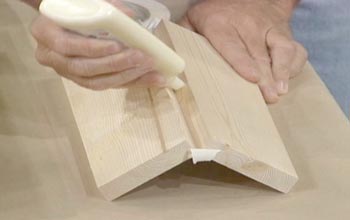
This glue is the adhesive of choice for any woodworker because of its easy application and affordable price.
Joining two pieces of wood together using this glue is easy, and even professionals do it to save cost without compromising the quality of the project.
Another adhesive that is quite popular in woodworking is epoxy glue. However, they tend to cost a lot more than PVA glue and also require a bit more hassle on the user to apply it.
However, when using PVA adhesive for woodworking, you need to consider its type carefully. Since this type of glue is not innately waterproof, you should not leave your wood outside unless you use a specific waterproof PVA glue.
In that case, you want to go for units that are rated specifically for woodworking. But if you are working on small indoor projects, using any type of glue should be fine.
Bookbinding
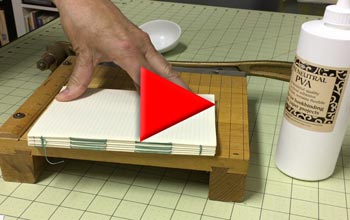
Bookbinding is the process of assembling the papers and book covers and attaching them in place using glue. Some take it as a hobby while some choose it as a profession.
Whichever route you decide to go with, if you are working on bookbinding, this would be the adhesive of your choice.
The obvious advantage that this glue has in this sector is that it does not dry as quickly as other types of adhesives.
This gives you some time to arrange the paper the right way. Even if you mess up the pages, you will be able to fix it before the glue dries up completely.
You can even extend the drying time of this adhesive if you want a bit more time to work on the pages. To do that, apply a bit of water and mix it well.
The glue will dilute and take longer to dry up, which can be extremely handy if you are working on a big book.
Besides, you can use color dyes with it to give different effects to the glue. This is something that many bookbinders like to do with their books.
Since applying the adhesive is also easy, it is one of the prime choices when it comes to bookbinding adhesives.
Art and Crafts Projects
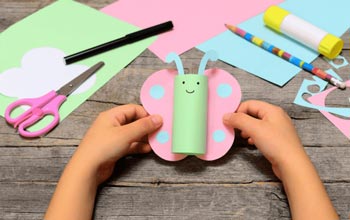
Another popular use of white glue is in children’s arts and crafts projects. PVA glue is completely non-toxic and emits no fumes.
So, it is a safe choice as a craft glue for your kids. If your child has an affinity towards creative arts, you can give him this adhesive without any worries.
In fact, many arts and crafts classes in schools give children PVA to work with. Even if consumed, this glue poses no serious threat to the safety of your child.
That does not mean that he should eat it, however. But accidents do happen, and with PVA, you will not have to worry about it if it happens.
It is not only children who can use this glue for arts and crafts, however. Many professional artists and hobbyists use glue in their crafts. And whether you are working with wood or paper, you should be able to use this glue without any issues.
Keep in mind though, if you are planning to craft with metal or metalworking in general, PVA glue might not be the best choice of adhesive.
It does not adherer to metal as well as it does with wood. So, you will not be able to join metal pieces together using this adhesive.
Leather Binding
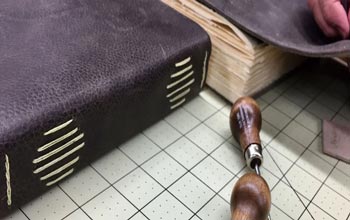
Although not the first choice for anyone, PVA glue is still pretty decent for binding and joining leather. It does not damage the leather and will ensure that the fabric stays in place. But you should definitely use waterproof PVA adhesive if you are planning to use it for leather binding.
The main issue with using PVA for leather binding is not the binding strength as one might think but rather the reversibility.
Once it dries on leather, it will be much harder to take it off if you want to reverse the process for whatever reason. You might even damage the leather in the process.
Other Applications
Apart from the four uses, we mentioned above, it can be used for many other applications. Other notable uses include pasting wallpaper or using it as a primer.
You can even glue joints of your new dining table or kitchen shelf using PVA glue without any issues.
As long as you use the correct type of glue for the task, you should be able to use it with just about anything. We will look a bit deeper into different types of PVA glue in a later portion of this article to help you understand the correct choice for different applications.
Final Thoughts
Clearly, PVA glue is an excellent choice as wood or craft glue, but its applications do not end there. The versatility of this glue is practically unmatched, and if you require connecting any items, there is a good chance that this adhesive can do it.
We hope our article on what is this glue and what it is used for could help you understand this adhesive better.

